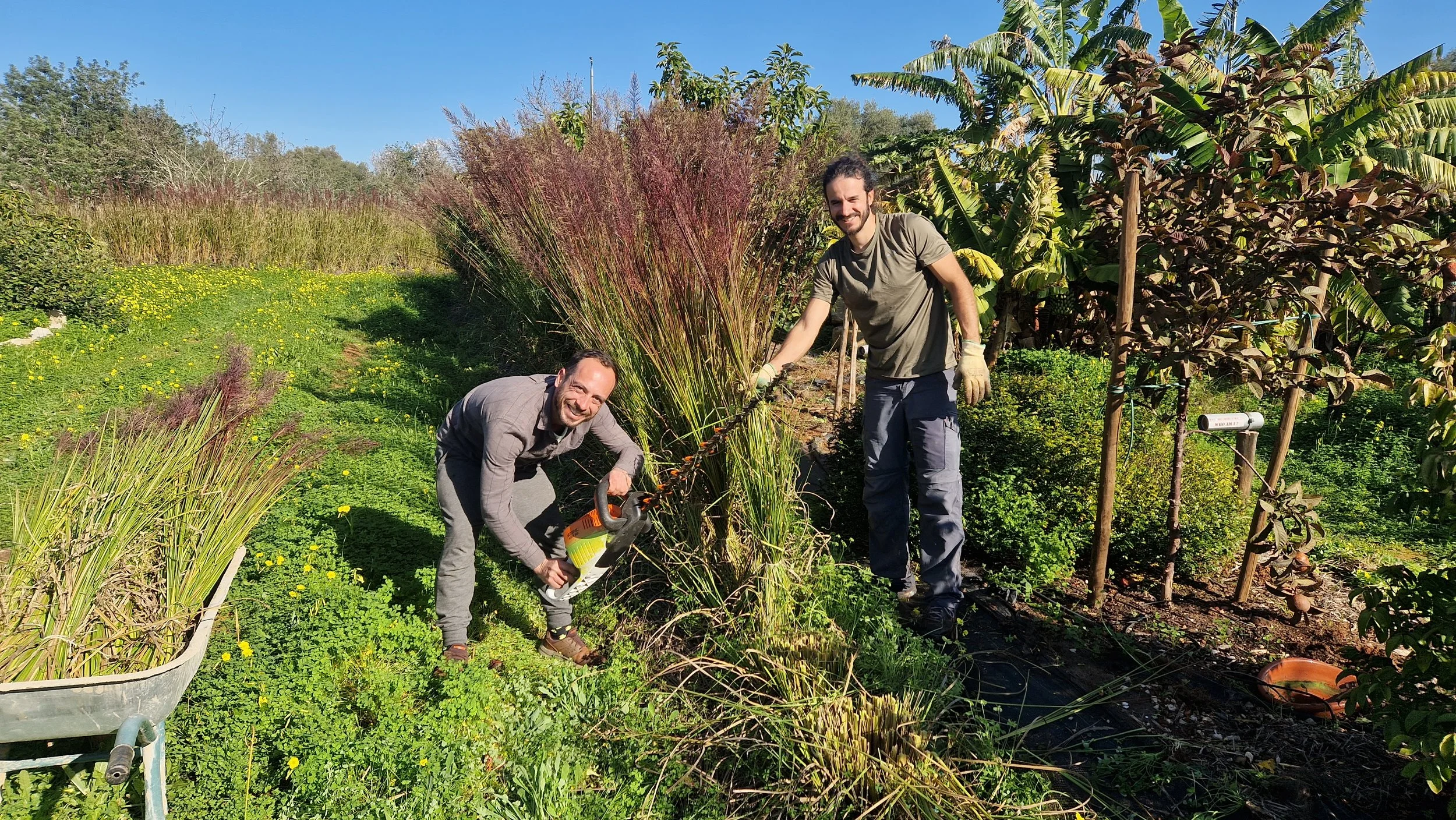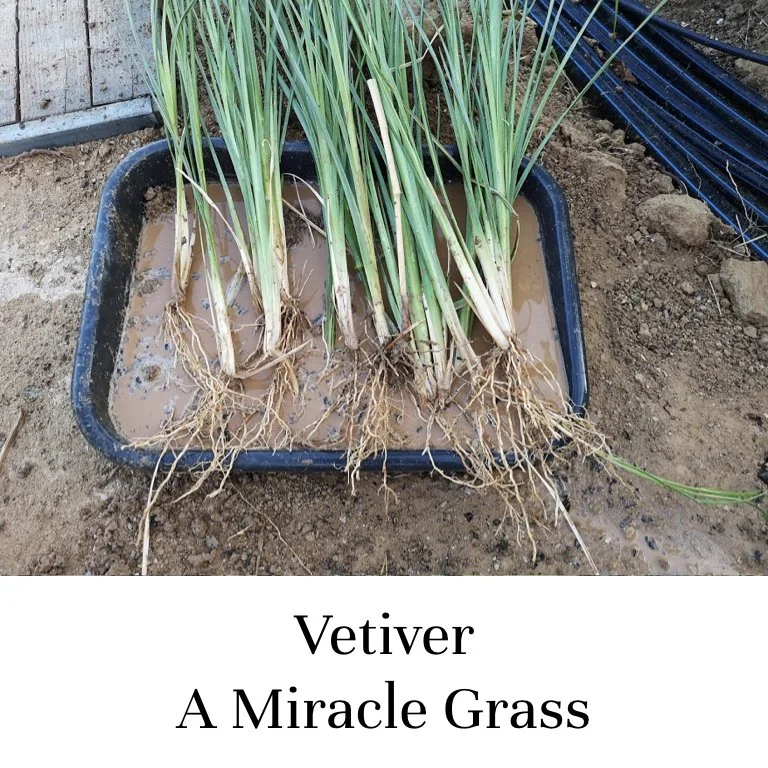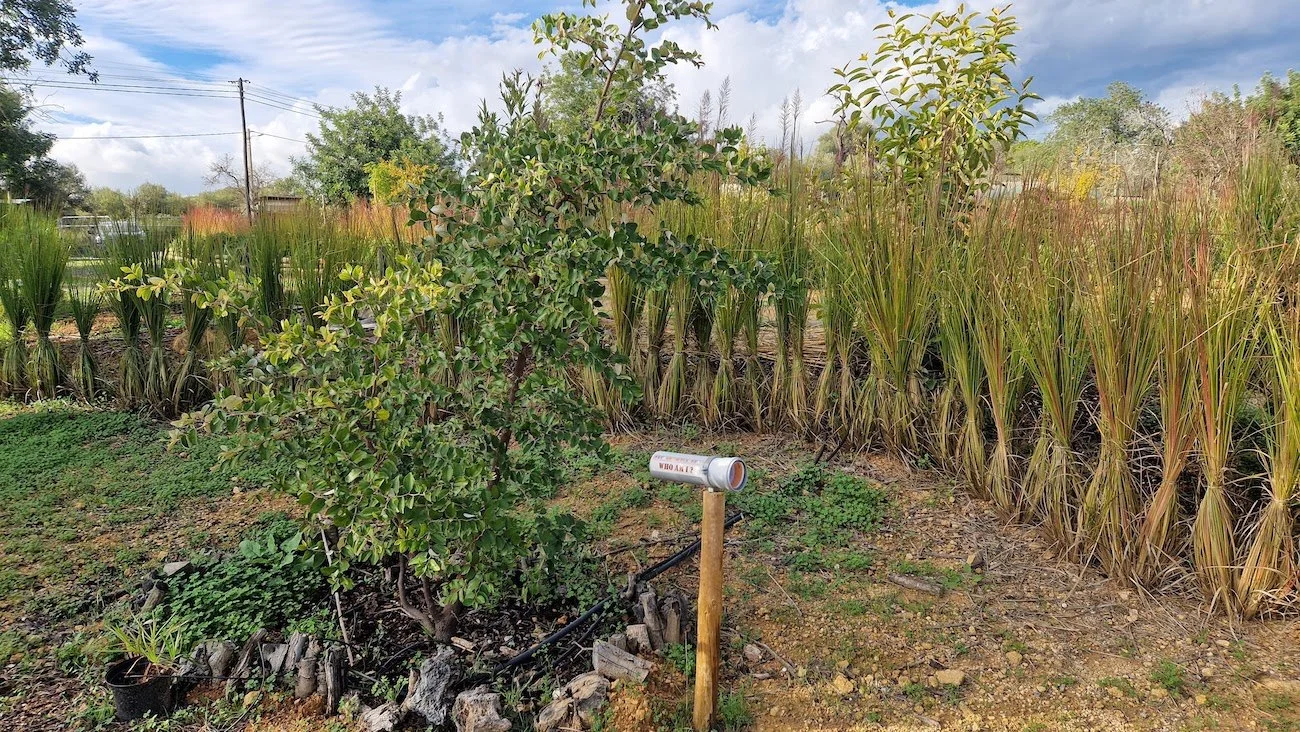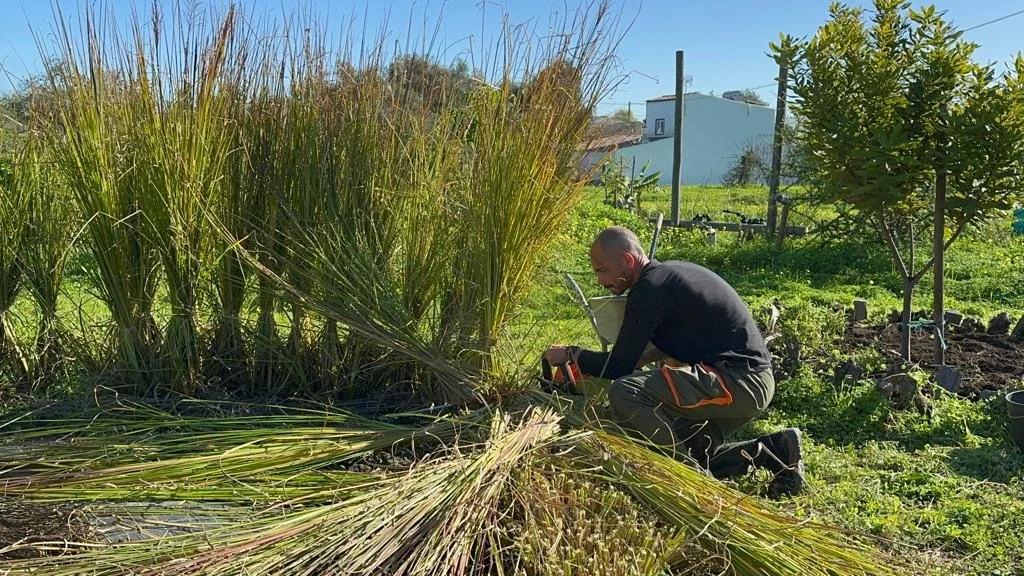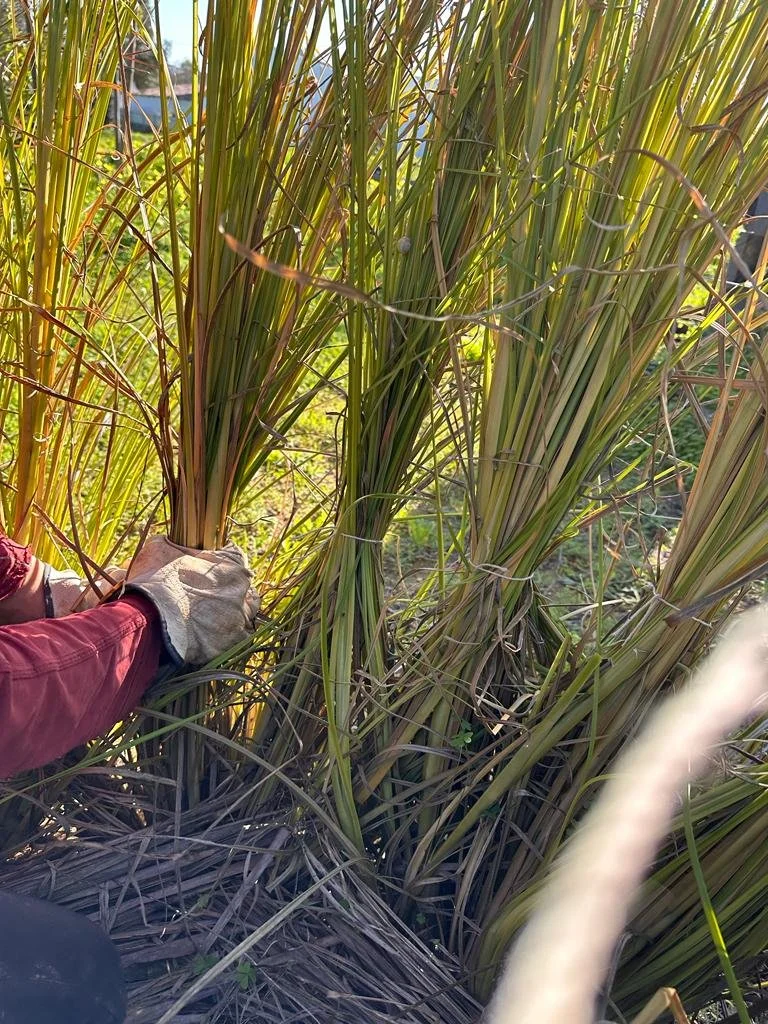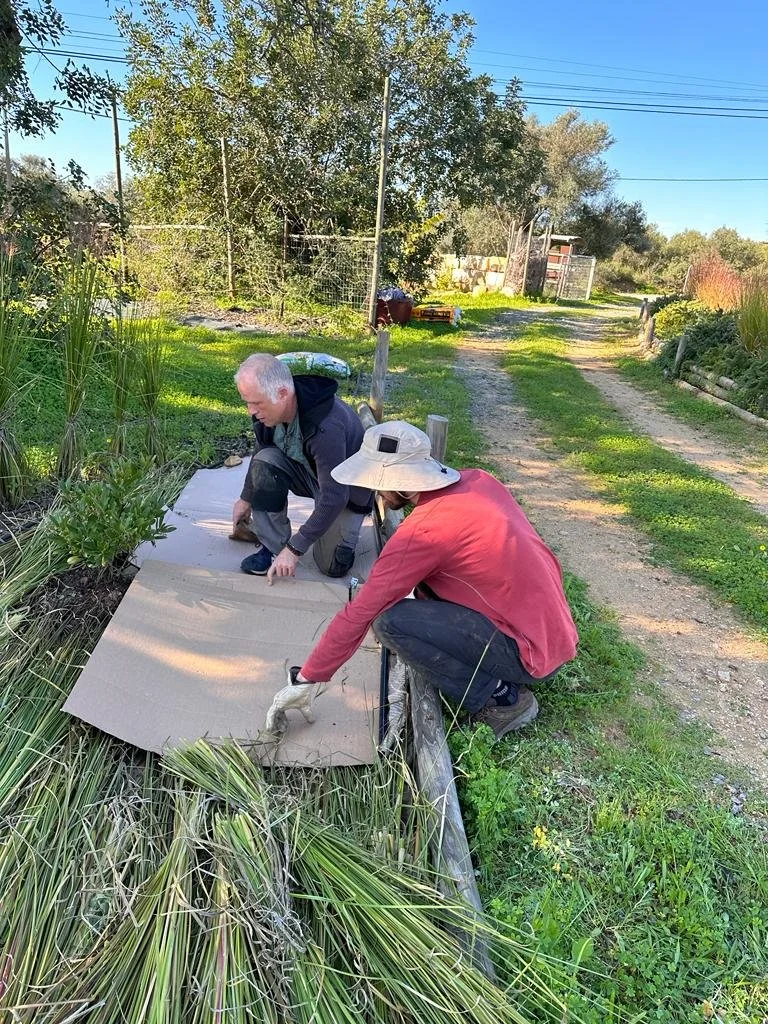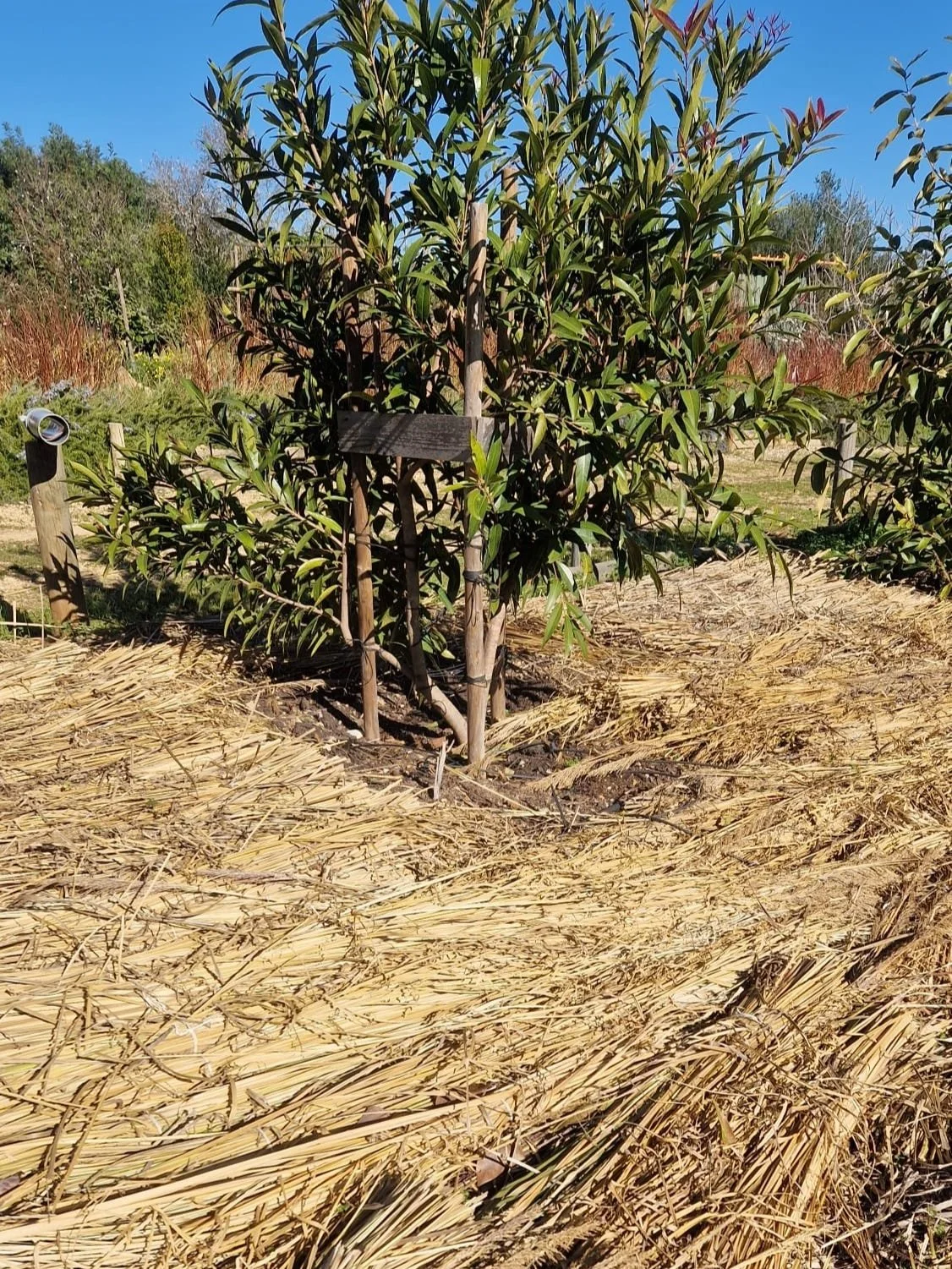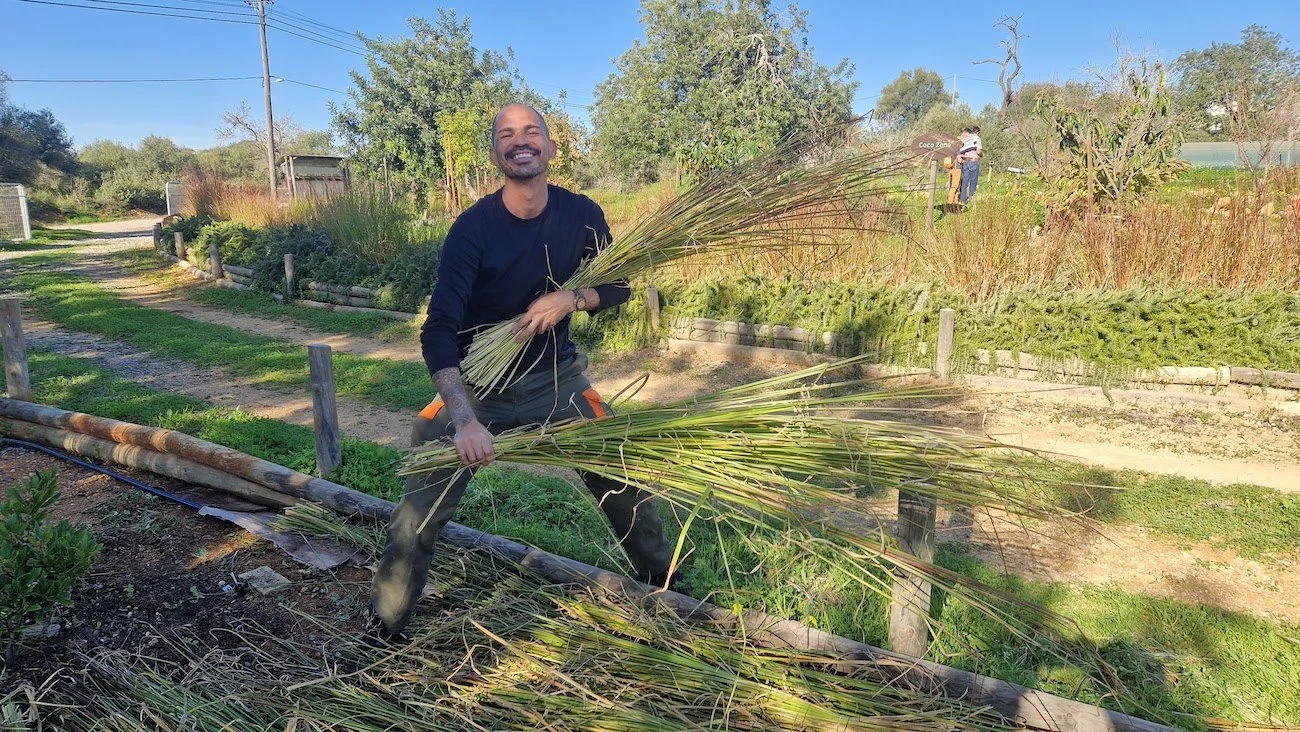How-to: Mulching with vetiver grass
In our Learn article, Vetiver, a true miracle grass, we already highlighted the many wonderful benefits, uses and functions that make vetiver grass such an amazing plant to have and to work with at the orchard, garden, or any landscape, really!
Because we’re living in times of unprecedented drought pressure and desertification that push us to act and find new and better solutions, this time we’ll be focusing on the benefits of mulching with vetiver, and sharing what we think is the best technique to put it in practice.
As a mulch material, Chrysopogon zizanioides (vetiver grass) is long-lasting and just amazing in terms of how significantly it can raise soil organic matter when decomposed and incorporated into the soil. Of course, as any top-grade mulch it provides effective weed control, improved soil moisture, reduced soil erosion, and so on..
However, at the Orchard of Flavours we found that simply chopping and dropping vetiver is not the most efficient way to use such an excellent resource, so we started using a technique that has provided us with fast, long-lasting and beautiful results.
If you simply put the cut grass on the ground without binding it together somehow, you will end up with a big mess, it might not be dense enough to avoid weeding and moreover it is very slippery. We also found that mulching with this technique will make the material last at least 2 years.
Keep reading and check out our simple process, step-by-step.
— this article continues below, please keep reading —
There’s so much to learn about Agroecology and Permaculture!
Learn more about mulching and why it’s such an important practice today.
Step 1:
Let your vetiver plants grow a whole year. In our Southern European climate of the Algarve, they reach their maximum height in November. Depending on the type of soil and the irrigation, they can easily reach up to 2 meters. If unwatered they will not die out but they will remain very small.
Here, during the summer, the vetivers are irrigated once every two days with 2 liters per plant. This allows for rapid growth and assures that we end up with very thick and tall plants.
You can repeat the operation every year.
Step 2:
Then, divide each plant into 2 to 3 bunches that you tie with a cotton rope, or other biodegradable material. The bunch should be around 6 to 8 cm thick.
You can do this step between December and April.
Step 3:
With a hedge trimmer (or some good garden loppers), cut the grass at their base (maximum 10-15 cm from the soil).
Step 4:
Collect each bunch and position on the ground, around your trees or on your garden beds. The objective is to create a dense thick “carpet”. An extra protection against weeds can be a layer or two of cardboard mulch, made wet and laid down before setting the vetiver grass on top.
Done!
So, what do you think? Have you experimented with a similar technique before?
Please let us know your thoughts and suggestions, or your feedback in case you decide to try it in your own garden or orchard!
This article was compiled by Miguel COTTON & Miguel PEREIRA. If you have any questions or suggestions, do not hesitate to contact us. miguel@orchardofflavours.com

